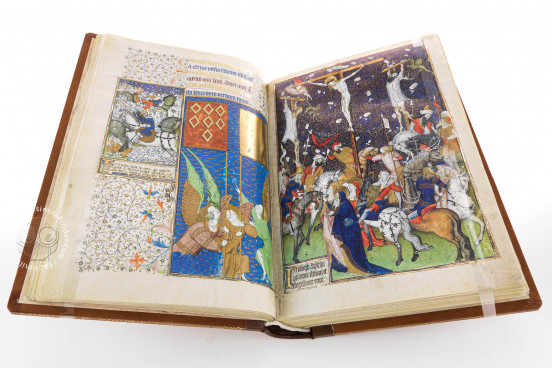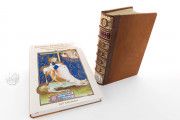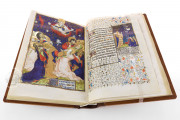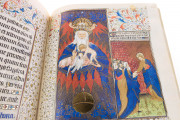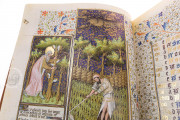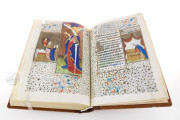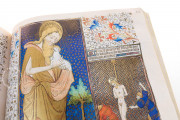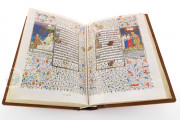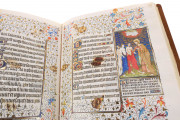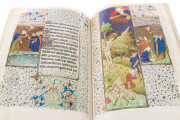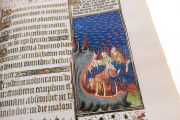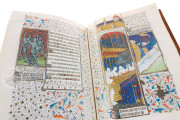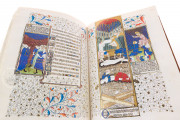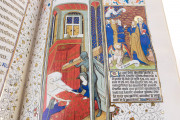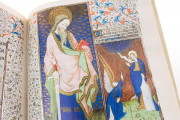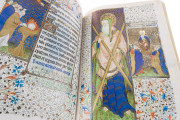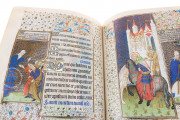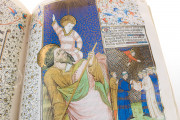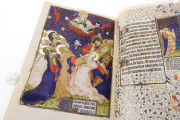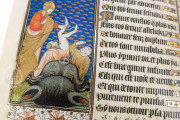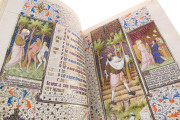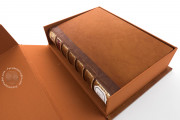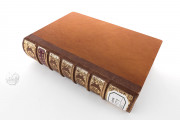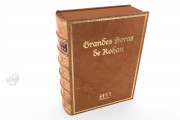In 1430-1435, the Rohan Master illuminated this Book of Hours preserved in the Bibliothèque Nationale in Paris, a devotional book remarkable for the dramatic effects of its illuminations. Studying closely the nature of human emotions, the Rohan Master was able to render in painting a variety of intense and complex feelings. This ability to render emotions in painting brought Millard Meiss to define the Rohan Master as the French expressionist painter of the fifteenth century.
The Emotional Illuminations of the Rohan Master
The vast decoration of the Book of Hours includes 11 full-page miniatures, 54 large miniatures, and more than 200 smaller miniatures. The illuminators used vivid colors and gold leaf. Scholars have recognized the style of the Rohan Master in about ten miniatures of the manuscript. The Rohan Master depicted the facial expressions, but also the gestures and the postures of the figures, in a way that could enhance the emotional participation of the characters to the overall scene. The Rohan Master had a large workshop whose artists probably contributed to the making of the Rohan Hours. Such talented illuminators as the Bedford and Boucicaut Masters along with the works of the Limbourg brothers inspired the painters of the Rohan workshop.
The margins of the book display Old Testament miniatures with inscriptions in Old French. These illuminations, in line with such didactic codices as the Bible moralisée, represent events from the Jewish tradition that are related in content and meaning to the main miniatures, depicting events from the New Testament.
The Old Testament scenes inspired by the Bible moralisée were based on a codex owned by Yolande of Aragon, the Angevin Bible (Bibliothèque Nationale, MS. Fr. 9561). The bible worked as a model for the illuminators. It is interesting that the subjects were copied including some errors in the captions. The manuscript of the Rohan Hours was left incomplete, ending abruptly after the Stabat Mater. It has been noticed that at least four miniatures are missing. The text of the liturgical hours was written in black and sometimes in an uncommon blue ink, and the Gospels in alternating blue, gold, and red lines.
The Origin of the Rohan Hours
There is no clear evidence about the circumstances of the making of the Rohan Hours. It has been suggested that the Duchess of Anjou, Yolande of Aragon, probably commissioned the book for her nephew Charles, the dauphin of France. Another hypothesis relies on the fact that the coat of arms of the house of Rohan is featured in the manuscript: the Rohan family would have commissioned the book for the wedding of Charles of Anjou, count of Milan with the daughter of Alain IX de Rohan.
Although the origin of the manuscript remains obscure, it is certain that in the fifteenth century the manuscript belonged to Isabella Stewart, Duchess of Brittany, who added the arms to the book (fol. 135r). The codex passed on to the House of Rohan, and eventually to the Jesuits in the seventeenth century. In 1784, the Duke of La Vallière sold the manuscript to the Royal Library.
We have 1 facsimile edition of the manuscript "Rohan Hours": Grandes Horas de Rohan facsimile edition, published by AyN Ediciones, 2005
Request Info / Price
